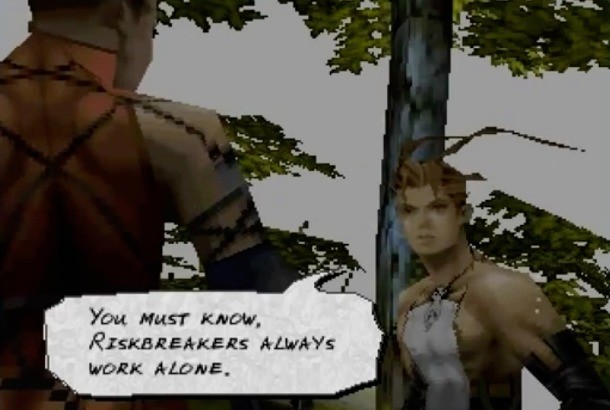Riskbreaker – Vagrant Story 15 Years On

Today, May 15, marks the 15-year anniversary of Vagrant Story's release in America on the original PlayStation. It's not a watershed moment in video game history, but Square's dungeon-crawling action/RPG deserves recognition. Personally, it remains a title whose art style and merging of various gameplay elements still sparks my imagination. Thankfully, the game is available via the PlayStation Store for PS3/Vita/PSP (and dirt cheap, too!), so you can still experience this classic.
I can't remember how I heard about Vagrant Story or exactly what drew my initial interest, but I was taken with Hiroshi Minagawa's hand-drawn art style and the overall dark, gothic overtones. Square is known for its gorgeous CG cutscenes, but Vagrant Story's use of in-engine assets for cutscenes was the right choice to preserve the game's particular mood. This is aided by Hitoshi Sakamoto's fitting, sometimes melodramatic, score using synth strings.
I never played Yasumi Matsuno's Final Fantasy Tactics or thought twice about tactical combat, so Vagrant Story's combination of real-time movement in combat with the pauses of the Battle Mode's combat sphere – allowing you to target available body parts at specific hit percentages – caught my eye. This mix of genres was surprising at the time, and would be something I would excitedly embrace years later in Fallout 3's VATS system. Vagrant Story's incorporation of real-time combat through timing button presses to chain together attacks or defensive moves on impact also kept me interested. It gives fights a rhythmic feel amidst the pausing of Battle Mode.

In another move away from traditional tactical RPGs, the game ditches the party and character class format to focus on Riskbreaker Ashley Riot as the sole playable character. I admit that the twists and turns of the story became less and less important to me as I played, but drilling down into Ashley's personal journey is a fitting choice. His loneliness heightens the weight of the world's machinations against him. Kudos, by the way, to the localization crew, which imbued the dialogue with a fitting, stylish vernacular.
The game uses RPG staples such as affinities, buffs/debuffs, and magic, some of which at the time gave me an education in RPG gameplay, and the Risk meter is a nice risk/reward proposition. The more you attack, the more Risk you accumulate. This gives you a greater chance to score critical hits (although your overall accuracy is lower), but also means your enemies can inflict more damage. A similar trade occurs with Break Arts – attacks that don't incur Risk, but which drain your health.
As deep as Vagrant Story's gameplay is, the one element that was surprisingly engaging was the weapon customization system. Weapons and equipment degrade over time and gems can be outfitted to them, but the best part is that weapons can be broken down to their constituent parts so they can be recombined with other parts to make them stronger or change their affinities. I looked forward to finding workbenches and fiddling with my stuff, and became very attached to some of my weapons.
Oddly enough, the game wasn't immediate for me. I started it, took a long break, and then couldn't put it down. Everything clicked, and I got in that sweet spot where you hit your stride and understand the game's full power. I can recall how that felt, which is why the game still reverberates with me 15 years later.
What are your memories of the game? Please let everyone know in the comments section below!
Here are the first four hours of the game via World of Longplay. Naturally, there are spoilers.

Get the Game Informer Print Edition!
Explore your favorite games in premium print format, delivered to your door.
- 10 issues per year
- Only $4.80 per issue
- Full digital magazine archive access
- Since 1991









